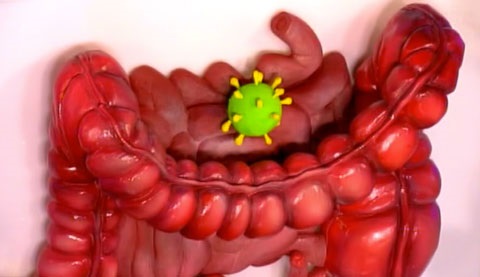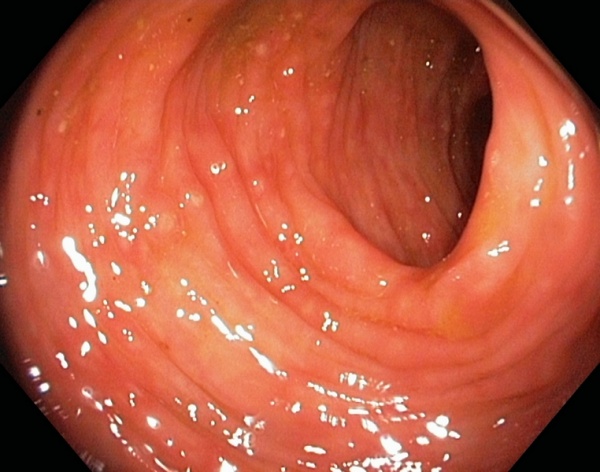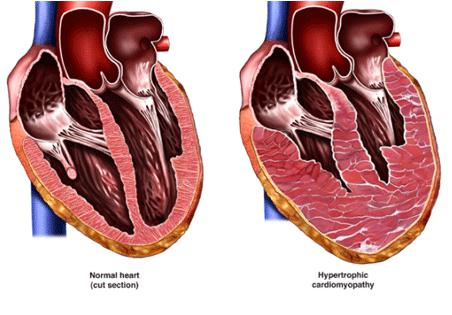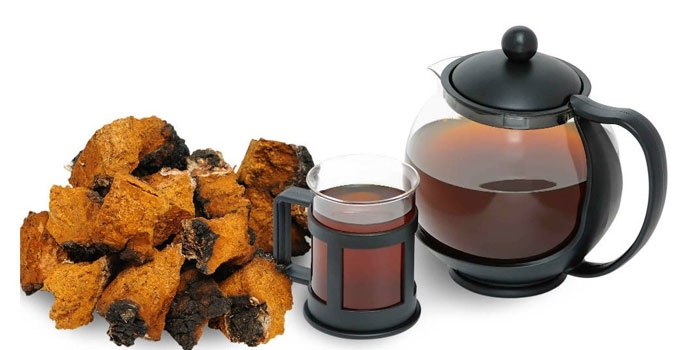How to treat rotavirus infection at home?
The disease rotavirus infection annually in the form of hundreds of thousands of outbreaks is recorded worldwide. Nearly 25 million individuals suffer from this disease every year, with 600-900 thousand cases ending in death, which is almost a quarter of all deaths that occur in diseases with diarrheal syndrome.
In our country, about 2 million cases of acute intestinal infections are recorded per year, of which about 15% are rotavirus gastroenteritis. At the same time, anti-rotavirus antibodies can be detected in 90% of children in the blood, which only confirms the widespread occurrence of this disease.
What it is?
Rotavirus infection is an infectious disease caused by rotaviruses. It is the most common cause of diarrhea in children. This disease is characterized by an acute onset, moderate or enteritis, a frequent combination of intestinal and respiratory syndromes in the initial period of the disease. Rotavirus infection is often incorrectly referred to as "stomach flu" even though rotavirus has nothing to do with influenza viruses.
Pathogen
The causative agent of this infectious disease is rotavirus, which belongs to the Reovirus family. This virus got its name because of the significant external resemblance to the wheel, which in translation into Latin sounds like a company. There are 8 different types of rotaviruses, but the most frequently detected type is rotavirus A, which in 90% of cases is isolated in humans during the development of this disease.
Genetic information is represented by a genome containing a molecule of ribonucleic acid, consisting of 2 strands, surrounded by a capsid, which is a protein shell containing 3 layers. Outside, the virus does not have a protective capsule, which is often called a supercapsid. The virus reaches a diameter of 65 to 75 nanometers, it is well resistant to low temperatures, which confirms the fact that its properties are preserved during repeated freezing. But when boiled, as well as when exposed to alcohol, it instantly dies. Its stability in the aquatic environment when using chlorine compounds is also noted.
How is it transmitted?
Rotavirus is not in vain called the disease of "dirty hands" (just like Botkin). This infection is transmitted mainly through the mouth and through contaminated food. It can be transmitted through close contact (kissing) and sharing utensils. It is not transmitted when shaking hands (if you wash your hands thoroughly after them and if the child does not take fingers in his mouth).
In the acute period of the disease, the virus is contained in the secreted mucus. Therefore, you can become infected with it when a sick person coughs and sneezes.

Pathogenesis
In rotavirus infection, there is a standard cycle of virion replication in the human body. The pathogen multiplies in the epithelial cells of the upper intestine, which die in large numbers. They are replaced “urgently” by immature epithelium, which cannot absorb water. The result is a loss of fluid and electrolytes.
However, the main cause of profuse diarrhea and dehydration is osmotic diarrhea: a large amount of undigested sugars accumulate in the intestines, because the cells are immature. As a result of the osmotic pump, water is intensively “pumped out” into the intestinal lumen. Interestingly, few people realize that such a disorder as diarrhea is the same as the wedding dress of a beautiful bird or butterfly: the bird attracts a partner, which increases the chances of reproduction, and profuse diarrhea dramatically increases the chance of spreading the virus over a large area, which leads to the reproduction and prosperity of the species.
After an infection, intestinal recovery usually ends by 5-8 weeks, with the exception of secondary dysbacteriosis, which must be corrected.
Incubation period
The duration of the incubation period can be from 1 to 5 days.
Signs of rotavirus in a child
Rotavirus is characterized by an acute onset and usually a benign course. The first signs of rotavirus infection in children are:
- loss of appetite;
- general deterioration and weakness;
- acute cramping pain in the abdominal region;
- vomiting (up to 3-4 times a day, including even in the morning on an empty stomach);
- increase in overall body temperature (up to 39˚ C).
Soon the patient develops acute diarrhea. Yellowish, watery stools, copious, without admixture of blood, with a sharp sour smell. As a result of severe diarrhea, acute dehydration (dehydration) of the body develops, which can pose a threat to the patient's life. Confusion or loss of consciousness, as well as convulsions, become signs of critical dehydration with rotavirus infection.
Other clinical manifestations that may be identified during the examination include:
- redness of the eye conjunctiva;
- hyperemia of the palatine arches and pharynx.
On the second day, as a rule, there is drowsiness due to a general weakening of the body.
Clinical symptoms are noted for 4-7 days, after which the bright signs of rotavirus infection subside, and complete recovery occurs with the formation of a fairly stable immunity to the virus.
Symptoms of rotavirus infection in adults
Adults also suffer from rotavirus, but some may mistake its symptoms for a common temporary indigestion (they say, “I ate something wrong”). Nausea and vomiting usually do not bother, there may be general weakness, loss of appetite, fever and loose stools, but not for a long time.
Rotavirus infection in adults is often asymptomatic. Despite the erasure of symptoms, the patient remains contagious all this time.
The easier course of rotavirus infection in adults is explained not only by stronger immunity, but also by the greater adaptability of the gastrointestinal tract to this kind of shake-up. Usually, if there is an infected person in the family or in the team, then within 3-5 days, the rest will also start to fall ill in turn. To prevent infection from a carrier of infection is possible only in the case of an active immune system.
Dangerous symptoms
There is a group of "alarming" symptoms for children and adults, the appearance of which should immediately seek emergency medical help. They indicate a severe infection and require inpatient treatment.
It is especially important to control the appearance of these symptoms in a sick child, since he will not be able to do this on his own.
- Increased diarrhea up to 10 times a day or repeated vomiting (more than 7 episodes per day) - the active release of fluid during rotavirus infection significantly increases the poisoning of the body with toxins. In this case, the patient is hospitalized in an infectious diseases hospital, where the lost volume of fluid and electrolytes is replenished using droppers.
- The appearance of red blood in the stool or black coloration of the feces (with a shiny tint and an unpleasant odor) is an extremely unfavorable sign that indicates an open intestinal bleeding. In this case, you should immediately call an ambulance or go to an infectious diseases hospital / hospital.
- The appearance of a rash on the body - small (up to 5 mm) and rare red spots that appeared during the illness are very characteristic of typhoid fever and paratyphoid fever. In some cases, these pathologies can masquerade as a common rotavirus infection.
- Severe abdominal pain - in a typical course, abdominal pain is practically not expressed. A significant increase in soreness may indicate damage to the intestinal walls.

Diagnostics
Rotavirus infection should be distinguished from food poisoning, cholera, salmonellosis, yersiniosis. For this, differential diagnosis is carried out.
Diagnosis is based on clinical findings with positive laboratory results. A coprogram is made without fail. When infected with rotavirus, rotavirus antigen is found in the feces.
They also donate blood for general analysis. Antibodies are found in the blood serum (but only after recovery).
Complications
There are no severe complications for a patient with rotavirus infection. However, it should be borne in mind that when a bacterial infection is added, the course of the disease is more severe, the clinical picture and symptoms may differ, approaches to the treatment of this type of disease are also different. People who are immunocompromised can also develop hemorrhagic gastroenteritis and necrotizing enterocolitis.
Treatment of rotavirus infection
Rotavirus infection can show a different course of the disease, but the whole treatment consists of 2 actions - rehydration and reduction of virus activity. Often the treatment of rotavirus in adults or children may require the appointment of antipyretic drugs. Such a medicine should be taken at a temperature higher than 38.5 ° C and avoid the use of acetylsalicylic acid (aspirin).
In order to avoid the development of dehydration of the body, rehydration therapy is necessary. Patients are advised to drink water, and preferably saline solutions (regidron or sodium chloride solution, prepared at the rate of 1 tsp of salt per 1 liter of water). The liquid should be taken in small portions no more than 50 ml every half hour. Intravenous fluid may be required only in the case of a very severe course of the disease with increasing intoxication of the body.
The treatment regimen depends on the severity of the disease, the age of the patient and location, but always includes antiviral drugs and plenty of fluids. Also prescribe absorbent agents that reduce intoxication of the body. Treatment can take place both at home and in a hospital.

Diet
Therapy should begin with proper nutrition. Older children and adults should exclude from their diet:
- Any plant foods (berries; vegetables; fruits, including dried ones);
- Bakery and flour products;
- Fatty, salty, spicy, fried foods;
- Whole milk;
- Broths.
According to recent studies, all this food increases the work of the intestines, which is why diarrhea will last a little longer. During the illness, it is recommended to eat boiled lightly salted cereals, in small but frequent portions.
Medical treatment
Treatment at home necessarily requires contact with doctors. As prescribed by the doctor, the following groups of drugs are used:
- Antiviral drugs - Kagocel, Tsitovir.
- Enzymes to improve digestion - "Pangrol", "Creon".
- Antidiarrheal drugs - Enterol, Loperamide, Imodium.
- Pre- and probiotics - Linex, Bifiform, Acipol, Bifidumbacterin, Hilak forte,
- Antipyretics - "Ibuklin", "Paracetamol", "Nurofen". To bring down the temperature of young children, you can use the Cefekon rectal suppositories, rubdowns with a weak solution of vodka or vinegar.
- Detoxification of the body is carried out with the help of sorbents "Polysorb", "Activated carbon", rehydration solutions "Regidron" and "Gastrolit". With slight dehydration, the solutions are taken orally. They are drunk in small sips every 10 minutes. To restore the lost fluid, drinking plenty of water, fruit drinks, tea is shown. Severe forms of the disease are treated in a hospital by intravenous administration of colloidal solutions.
- Antibiotics are indicated for secondary infection of the intestine with bacteria - "Enterofuril", "Alpha Normix". They should be used with caution so as not to provoke dysbacteriosis.
- To relieve cramps and pain in the abdomen - "No-shpa", "Spazmalgon".
- Drugs against heartburn - "Reni", "Maalox", against vomiting - "Motilium".
It is strictly forbidden to give antidiarrheal drugs to an infected person without a doctor's prescription. Also, in the absence of direct indications, antibiotics should not be taken. They do not affect the virus, but can harm the intestinal microflora. They are prescribed only with an obvious or diagnosed bacterial infection.

Prevention
Non-specific prevention consists in observing sanitary and hygienic standards (washing hands, using only boiled water for drinking), cleaning and chlorinating tap water.
Since improved sanitation does not reduce the prevalence of rotavirus infection, and hospitalization rates remain high despite oral rehydration agents, vaccination is a critical public health intervention. For the specific prevention of rotavirus infection caused by rotavirus A, there are currently two vaccines that have passed clinical trials: Rotarix from GlaxoSmithKline and RotaTeq from Merck & Co. Both are taken orally and contain attenuated live virus.
Rotavirus vaccines are licensed in over 100 countries, but only 17 countries have introduced routine vaccination. Since the introduction of routine vaccination in the United States in 2006, the incidence of rotavirus gastroenteritis has "rapidly and significantly" declined, despite relatively low coverage compared to childhood immunizations for other diseases. Clinical trials of the Rotarix vaccine in South Africa and Malawi have shown that the vaccine significantly reduces the severity of diarrhea caused by rotavirus and is able to prevent infection. In 2012, a Cochrane Collaboration review of 41 clinical trials involving 186,263 participants confirmed the effectiveness of the Rotarix and RotaTeq vaccines. Other vaccines are also in development.
- Intercostal neuralgia - what is it and how to treat
- How to quickly get rid of dry corns on the legs
- How to treat left ventricular hypertrophy
- Rating of the best drugs for rotavirus for children
- Making tea from currant leaves, the benefits and harms of the drink
- How to drink hydrogen peroxide according to Neumyvakin - an oral regimen
- Features of the treatment of plantar fasciitis with folk remedies
- The composition and beneficial properties of parsley root
- How to get pregnant quickly? Folk remedies
- Herbs-ants in the "pot-bellied" period or the use of herbal medicine during pregnancy
- Why does a sore throat and dry cough occur, and what treatment is required?
- In what year did Zhirinovsky first run for office
- Who is a pedant? What is pedantry? Pedantry equals scrupulousness? Positive traits of a pedant
- Meaning of esthete Examples of using esthete in context
- what is haiku what is haiku
- Lily is a Tatar name. What does the name lily mean. Short and diminutive address
- Golden, red and black bananas
- Rule for adding square roots
- What is a can of Coca Cola made of?
- What should you remember before cloning yourself?









